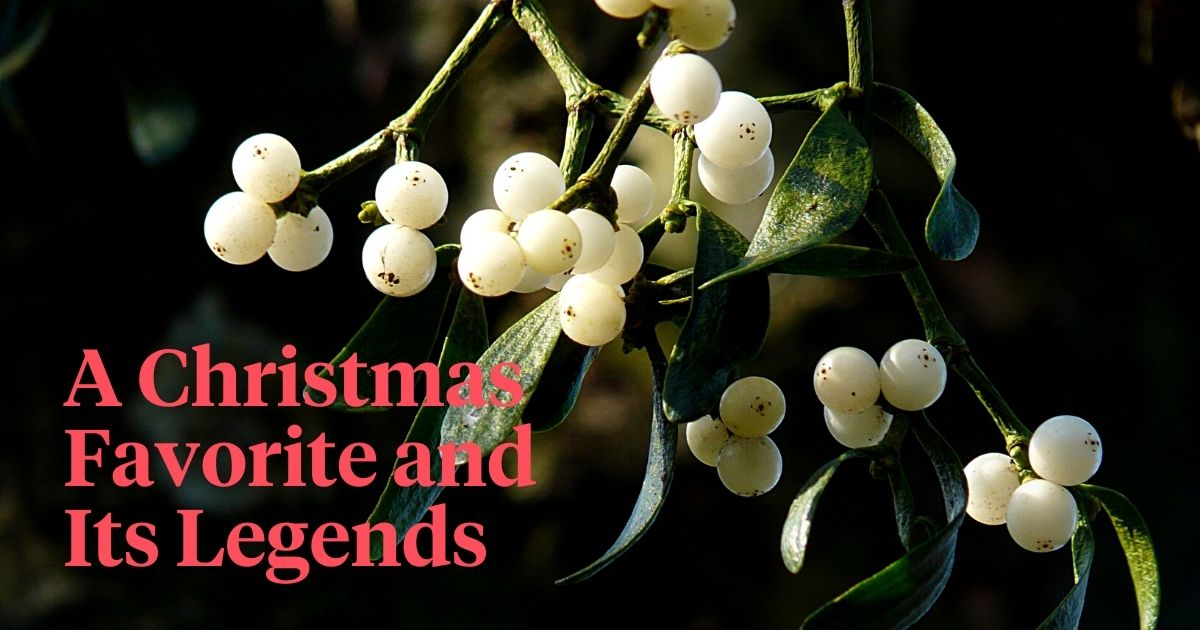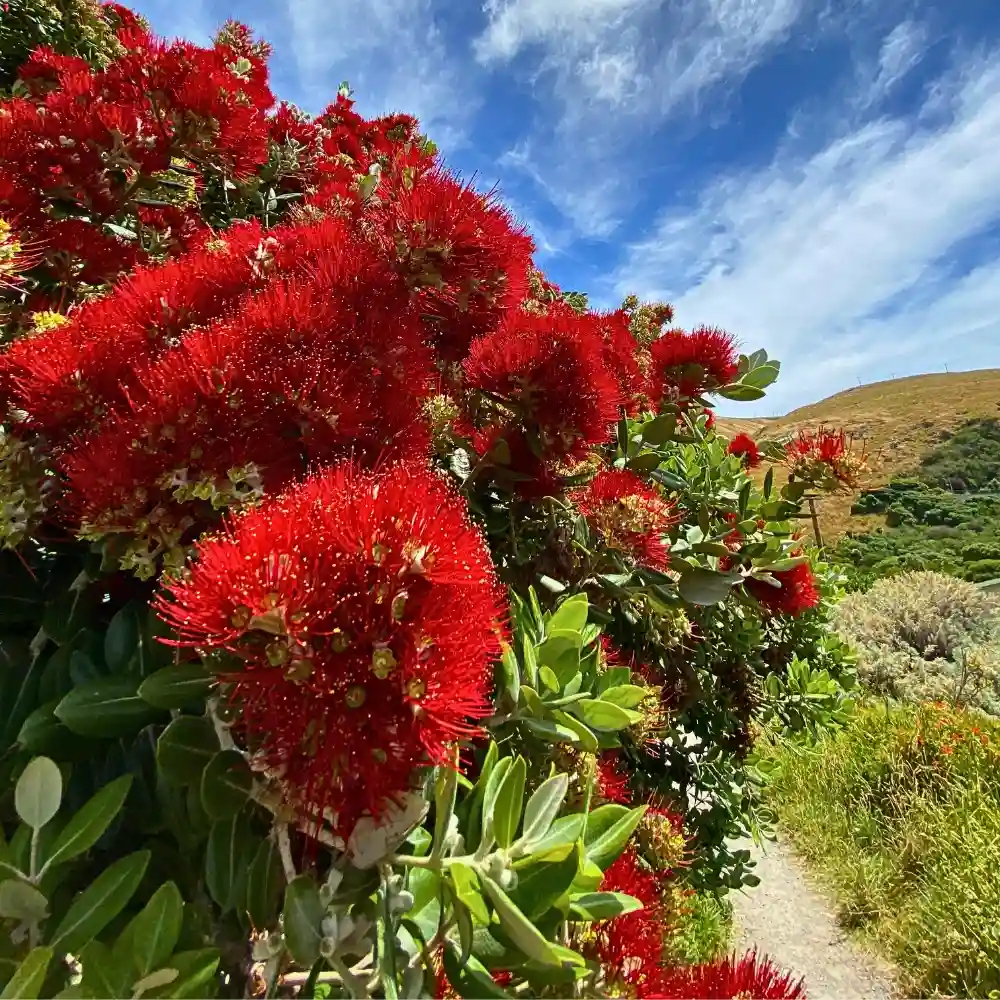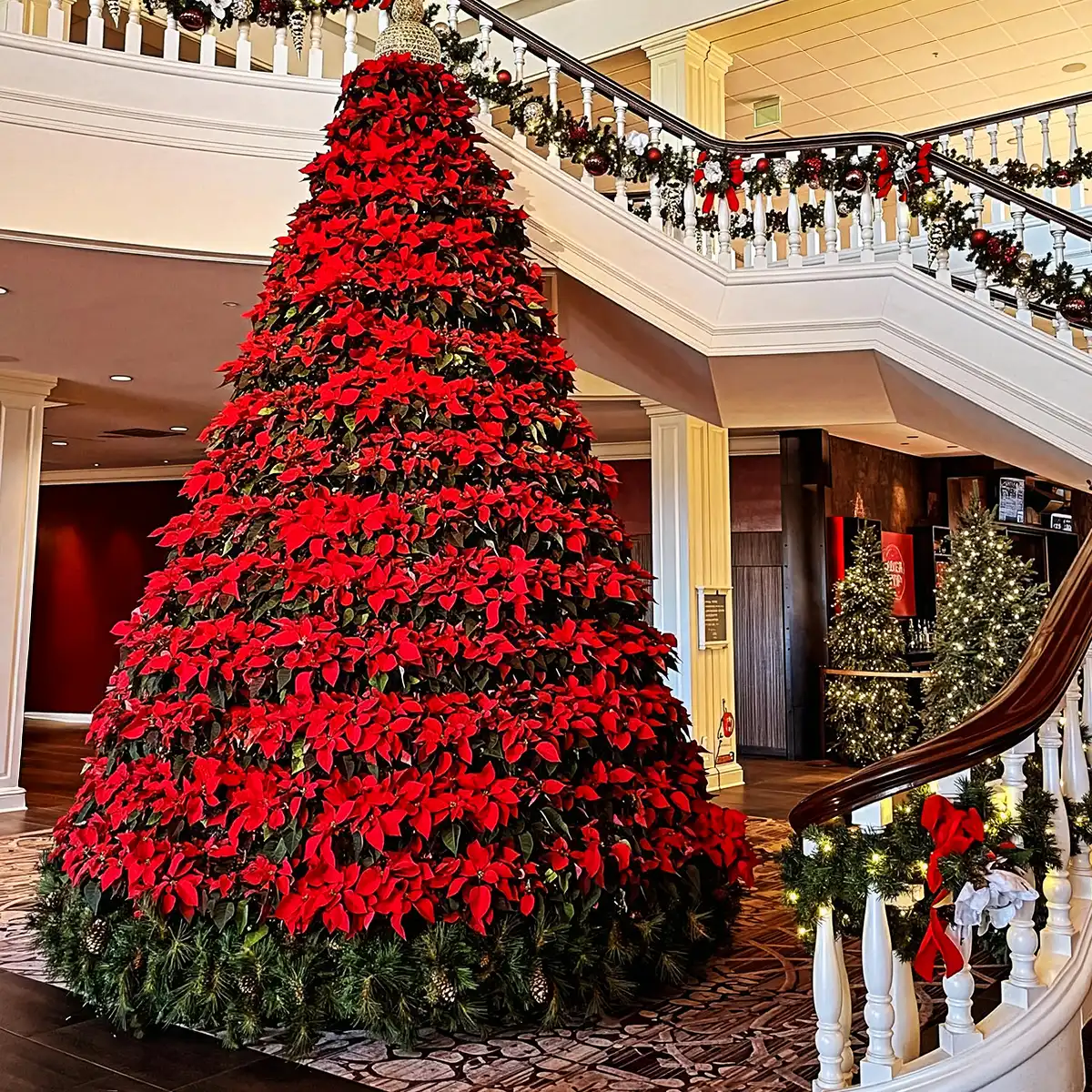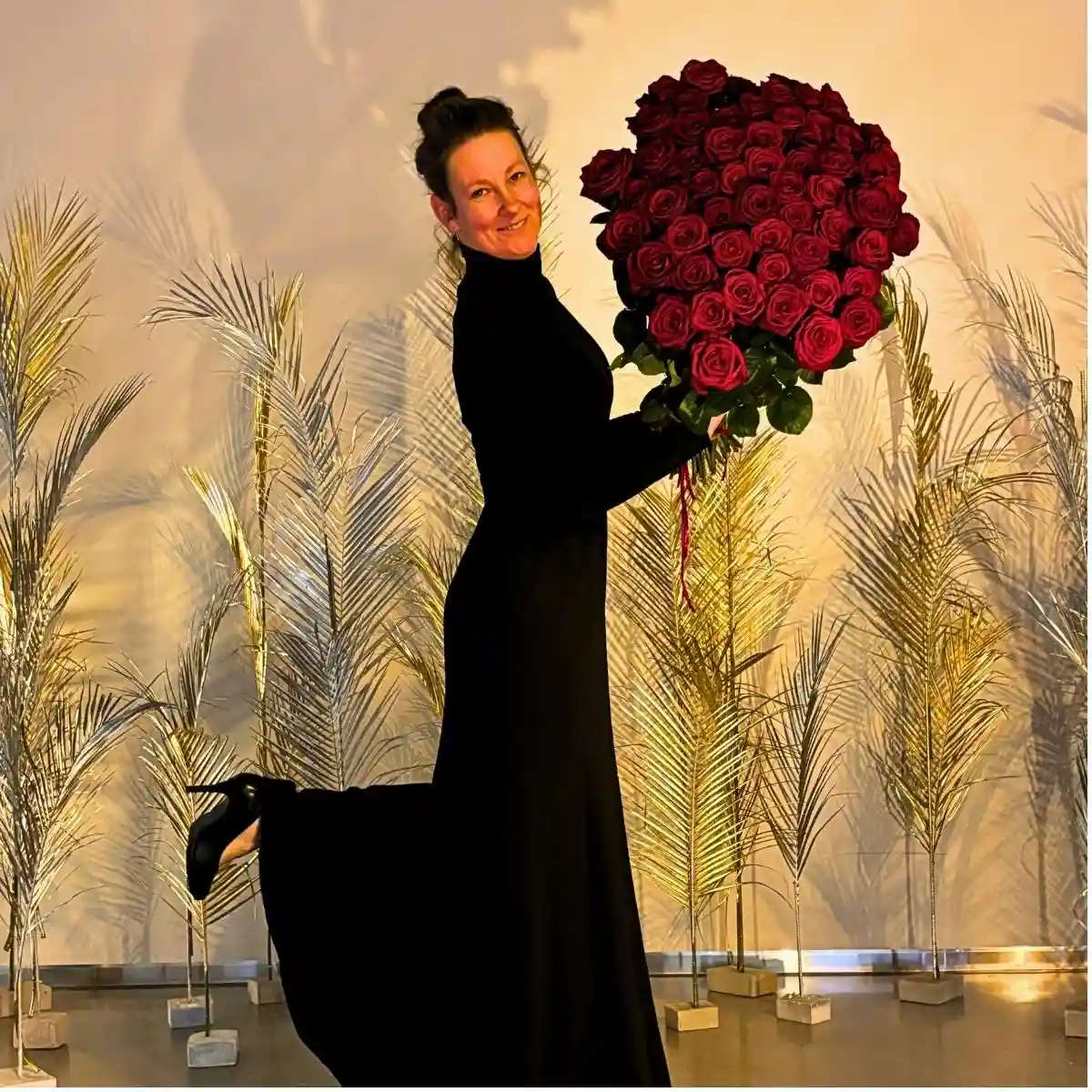Mistletoe which is among the favorite greeneries for festive adornment, has been used as a Yuletide decoration for centuries. The dark green, oval-shaped leaves and white berries of this plant symbolize peace and love. From Harry Potter’s first kiss to Justin Bieber’s holiday tune, kissing under the mistletoe is everywhere in pop culture. But this Christmas tradition - that if you’re standing under the leafy plant, it’s time for a smooch - existed long before it ever appeared in movies and pop songs.
During the Christmastide period, one can often find sprigs of mistletoe adorning doorways and festive decorations. Also known as birdlime, Herbe de la Croix, Mystyldene, Lignum crucis, golden bough, drudenfuss, iscador, or devil’s fuge, mistletoe is an evergreen plant that grows on trees, with small, white fruits and pale yellow flowers. The plant is synonymous with Christmas, evoking images of romantic encounters and playful kisses.
But how did this humble plant earn its reputation as the famous kissing plant, and become a Christmas favorite?
The Origin of the Mistletoe Legend
The mistletoe legend has its roots in different mythologies including Norse and Druid folklores. In Norse lore, Balder, the god of the summer sun, dreamt of his death.
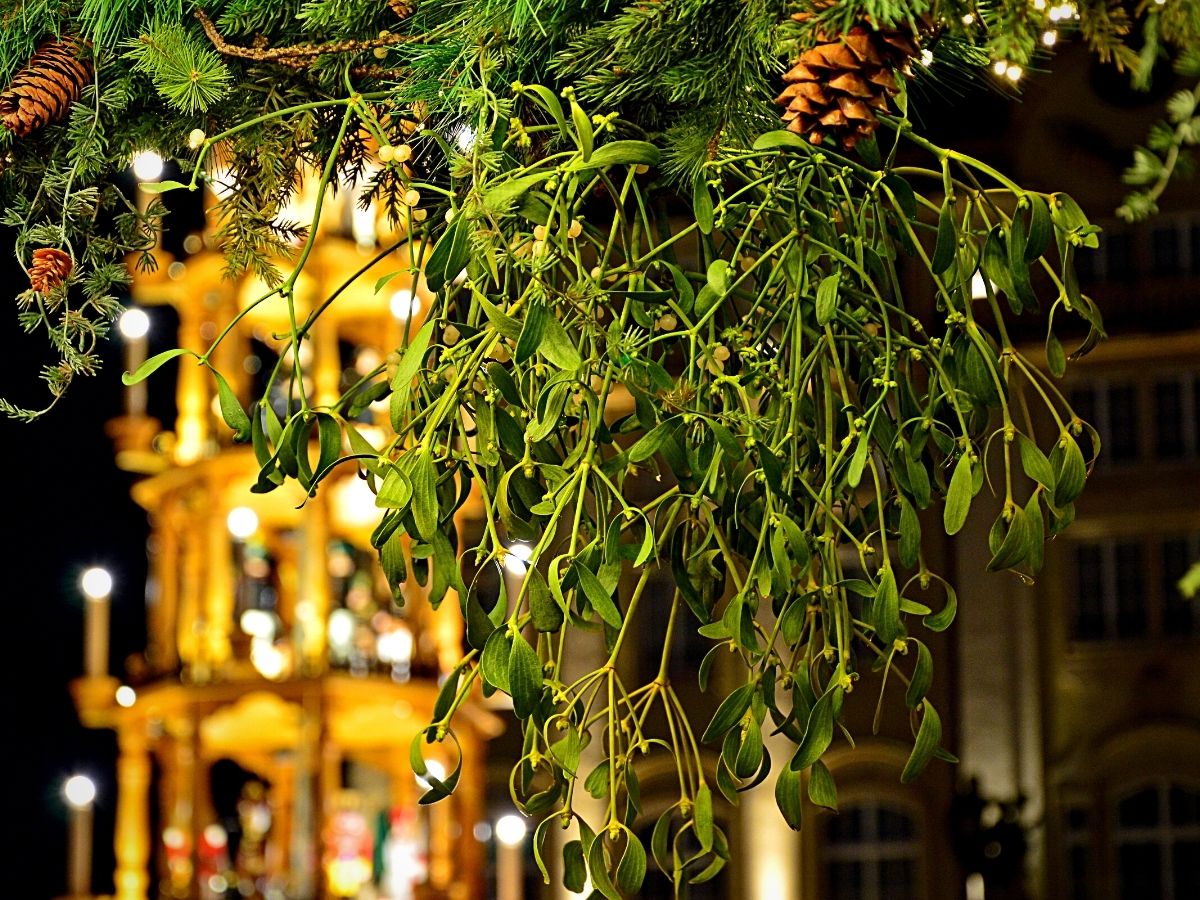
Photo by Peggychoucair
His mother, Frigg, the goddess of love, was worried about her son’s life and life on earth because she knew that without Balder, all life would come to an end. She, therefore, went everywhere and appealed to every being in the air, water, fire, and earth, to promise her that they would never harm her son.
She was promised the safety of her son by every animal and plant under and above the earth. However, Loki, the god of evil, who was an enemy of Balder and always had evil designs in his mind, was aware that there was one plant that Frigg had overlooked. It grew on apple and oak trees and was known as mistletoe.
Thus, Loki made an arrow and placed a sprig of this plant at its tip. He then beguiled Hoder, the blind brother of Balder and the god of winter, and made him shoot this arrow at Balder. Balder immediately died, and everybody was worried as the earth turned cold and life became dreary.
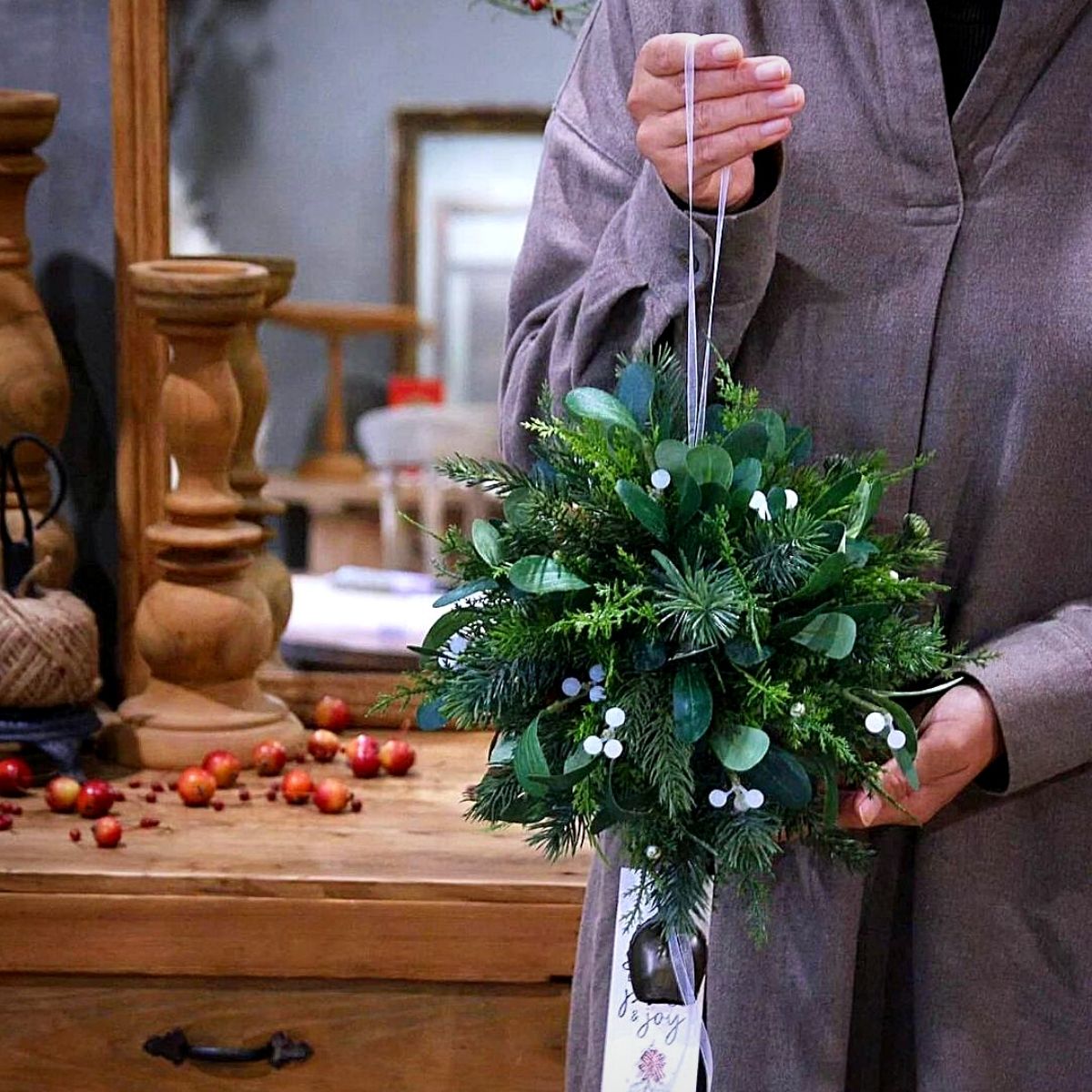
Photo by @kanon_flowers
For the next three days, every creature tried to bring Balder back to life, but he was revived only by Frigg, with the help of mistletoe. Her tears on the plant became pearly white berries, and she blessed it such that anyone who stood under it would never be harmed and would be entitled to a kiss as a token of love and appreciation.
In another legend, among the ancient Druids, a group of Celtic priests who inhabited the British Isles during pre-Roman times, mistletoe held great significance in their religious and cultural practices. They believed that it possessed mystical powers and considered it a sacred plant.
According to Druidic tradition, mistletoe was a symbol of fertility and rebirth. During the winter solstice, the Druids would gather mistletoe from oak trees using golden sickles and conduct elaborate ceremonies. They believed that the plant had the power to bring good fortune, ward off evil spirits, and increase vitality.
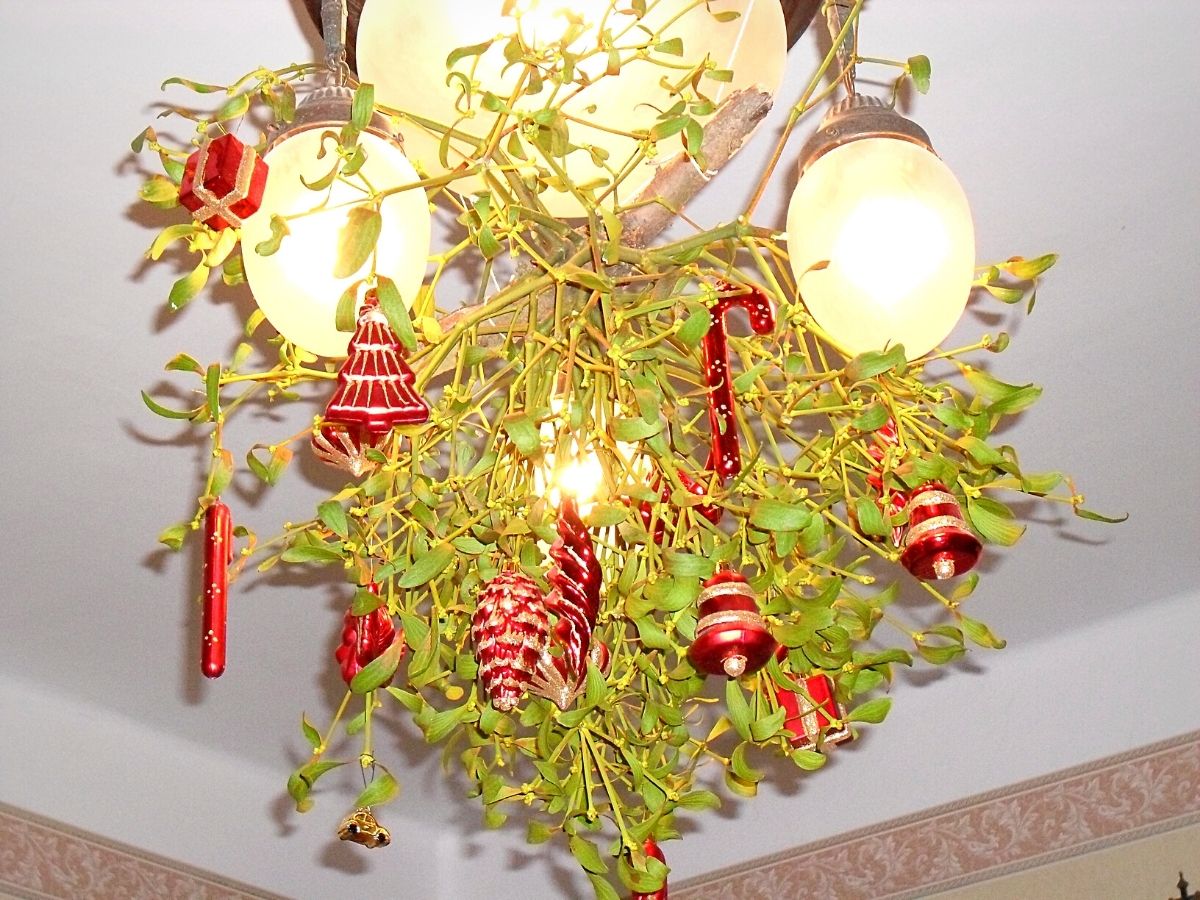
Photo by Enstropia on Wikimedia Commons.
They also associated it with peace and harmony. During times of conflict, it was customary for enemies to lay down their weapons when they encountered each other beneath the branches of a mistletoe-bearing tree. This tradition, also, eventually evolved into the practice of exchanging kisses as a sign of goodwill and rapport.
A Christmas Favorite: Kissing Under the Christmas Mistletoe
Over time, the association between mistletoe and the winter solstice merged with the Christian celebration of Christmas. Mistletoe, soon, became one of the most popular plants for Christmas festivities' decorations. The practice of hanging mistletoe in homes during the holiday season gained popularity since the 18th century and has continued to this day.
In this tradition, sprigs of mistletoe were suspended from doorways or ceilings, and it was customary for people to exchange kisses when standing beneath it. If a couple shared a kiss, it was believed to bring good luck and blessings to their relationship. In some traditions, each time a kiss occurred, a berry was plucked from the mistletoe until no berries remained.
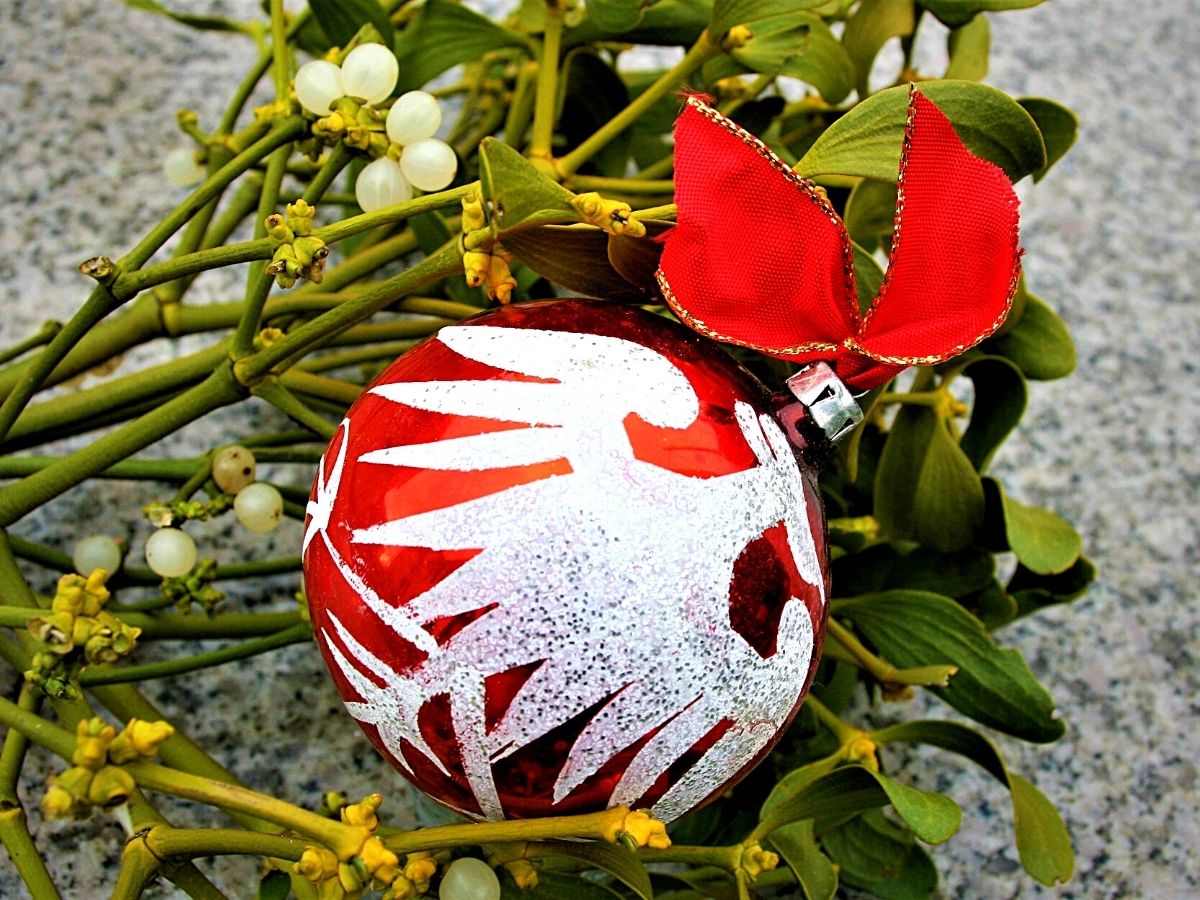
Photo by @pasja1000
The earliest recorded date mentioning kissing under the mistletoe is in 1784 in a musical. There was kissing under the mistletoe in the illustrations in the first book version of ‘A Christmas Carol’ published in 1843, and this might have helped to popularize kissing under the mistletoe. The original custom was that a berry was picked from the sprig of mistletoe before the person could be kissed and when all the berries had gone, there could be no more kissing.
The tradition has nowadays, however, become a lighthearted and playful activity shared during the holiday season.

Besides being hung in doorways, mistletoe is also used in other Christmas decorations. It is often incorporated into wreaths, garlands, and centerpieces, adding a touch of natural beauty to the festive ambiance. It can be combined with other evergreen foliage, such as holly and pine, to create visually appealing arrangements.
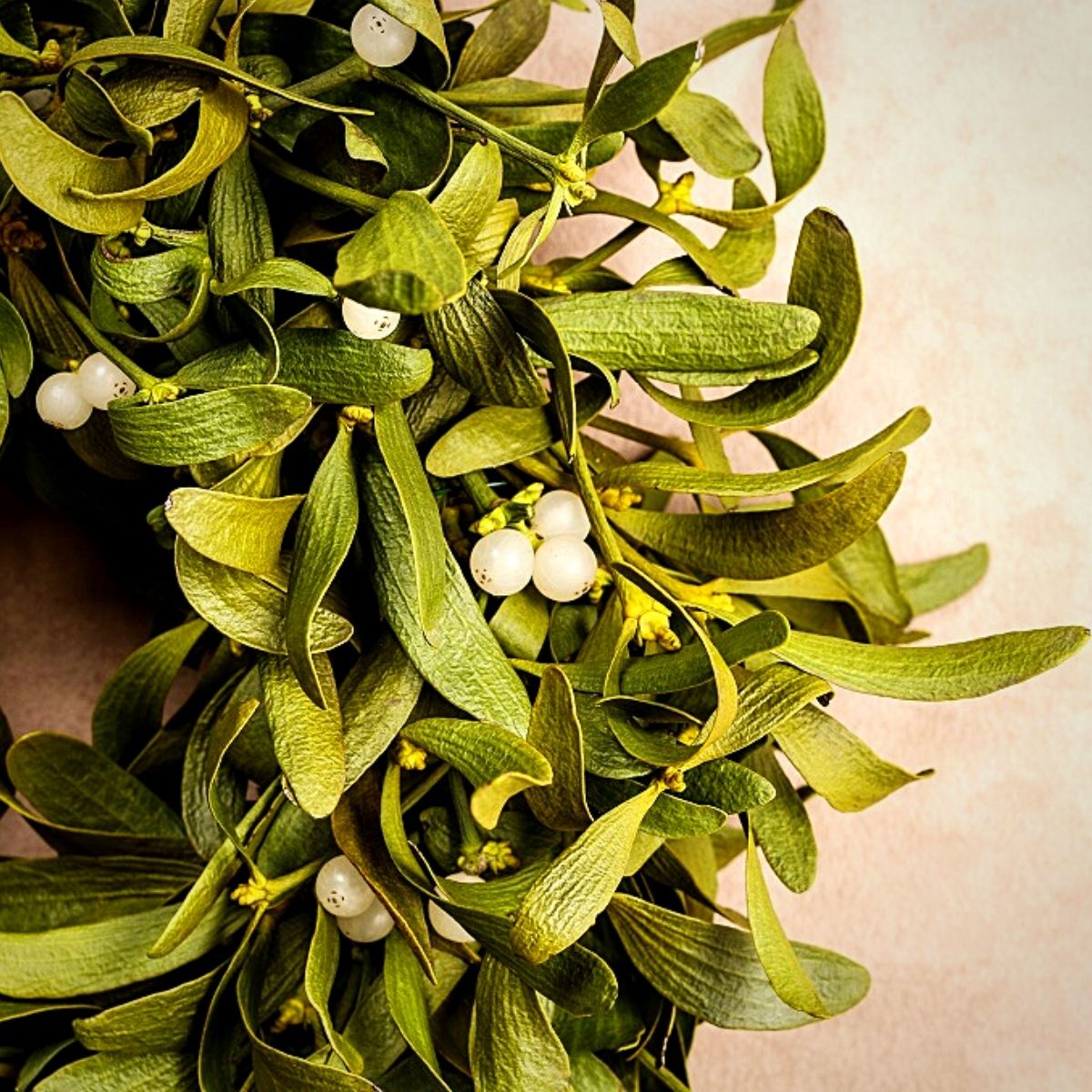
Photo by @gardenstory.jp
In such Christmas decorations, the plant’s leaves and white berries bring a touch of natural beauty and add a festive charm to any setting. These berries ripen during the winter months, creating a beautiful contrast against the plant's green leaves. However, they can be toxic if ingested.
The nuances of mistletoe as a Christmas favorite now extend beyond its decorative appeal. The act of kissing under the mistletoe is often taken to symbolize celebration and sharing of Christmas joy and warmth. It creates an atmosphere of coziness, love, and connection among family, friends, and even strangers.
Furthermore, mistletoe has been associated with romance and love for centuries. It is believed that a couple who kisses beneath the mistletoe will experience good luck and blessings in their relationship. This tradition has inspired myriad stories, movies, and songs, adding to mistletoe's fascinating charm.
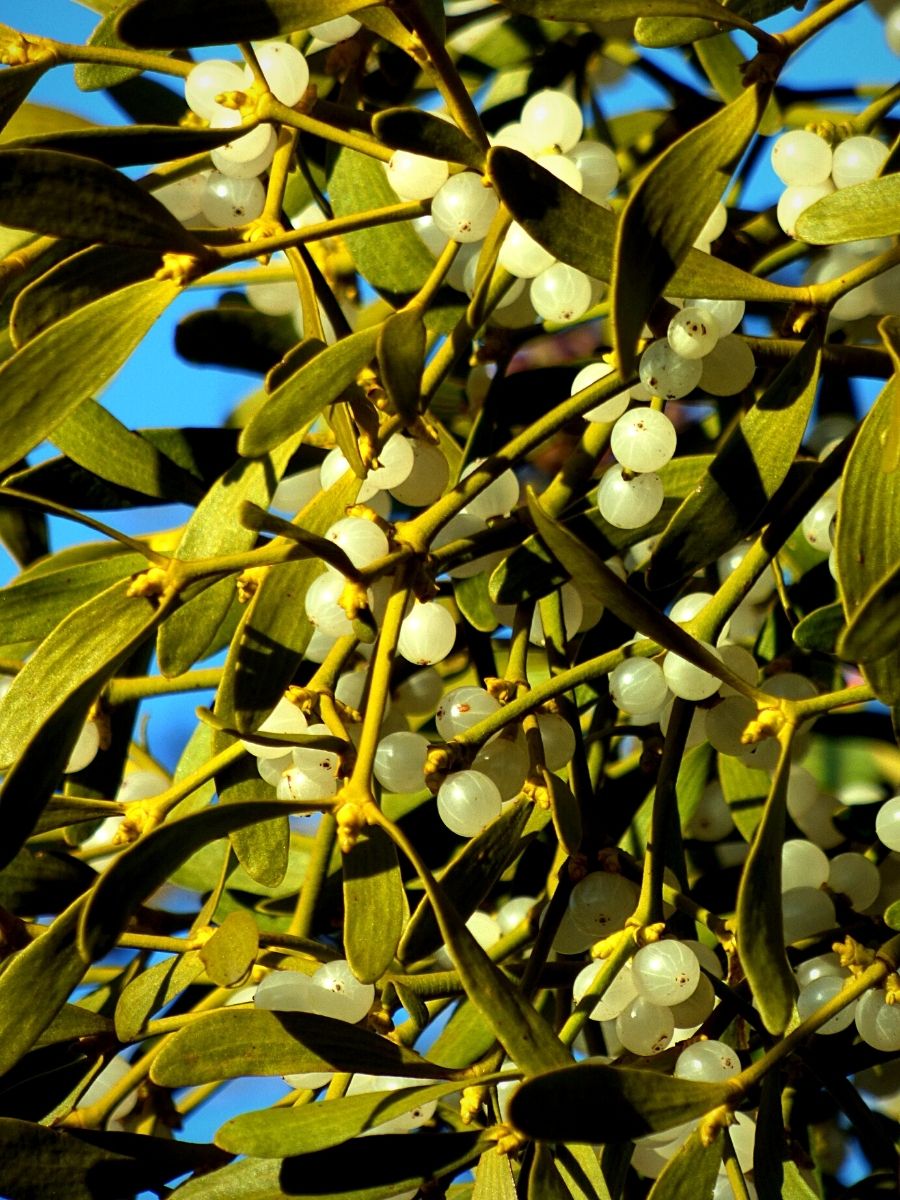
Photo by rycky21
Mistletoe Plant’s Versatility and Immense Significance
While the general name mistletoe is commonly associated with the European mistletoe (Viscum album), there are numerous species found across the globe. The European variety grows in temperate regions all over the world. Notwithstanding, each mistletoe species carries its own representation and cultural significance.
In North America, other mistletoe species including Phoradendron serotinum are commonly found. They thrive in the deserts in the southwest, where they live on palo verde, mesquite, juniper, pine, and other trees.
In this region, they have been used by Native American tribes for their medicinal properties and as a symbol of fertility. The Cherokee people believed that the mistletoe plant had the power to increase fertility in women and promote healthy pregnancies.
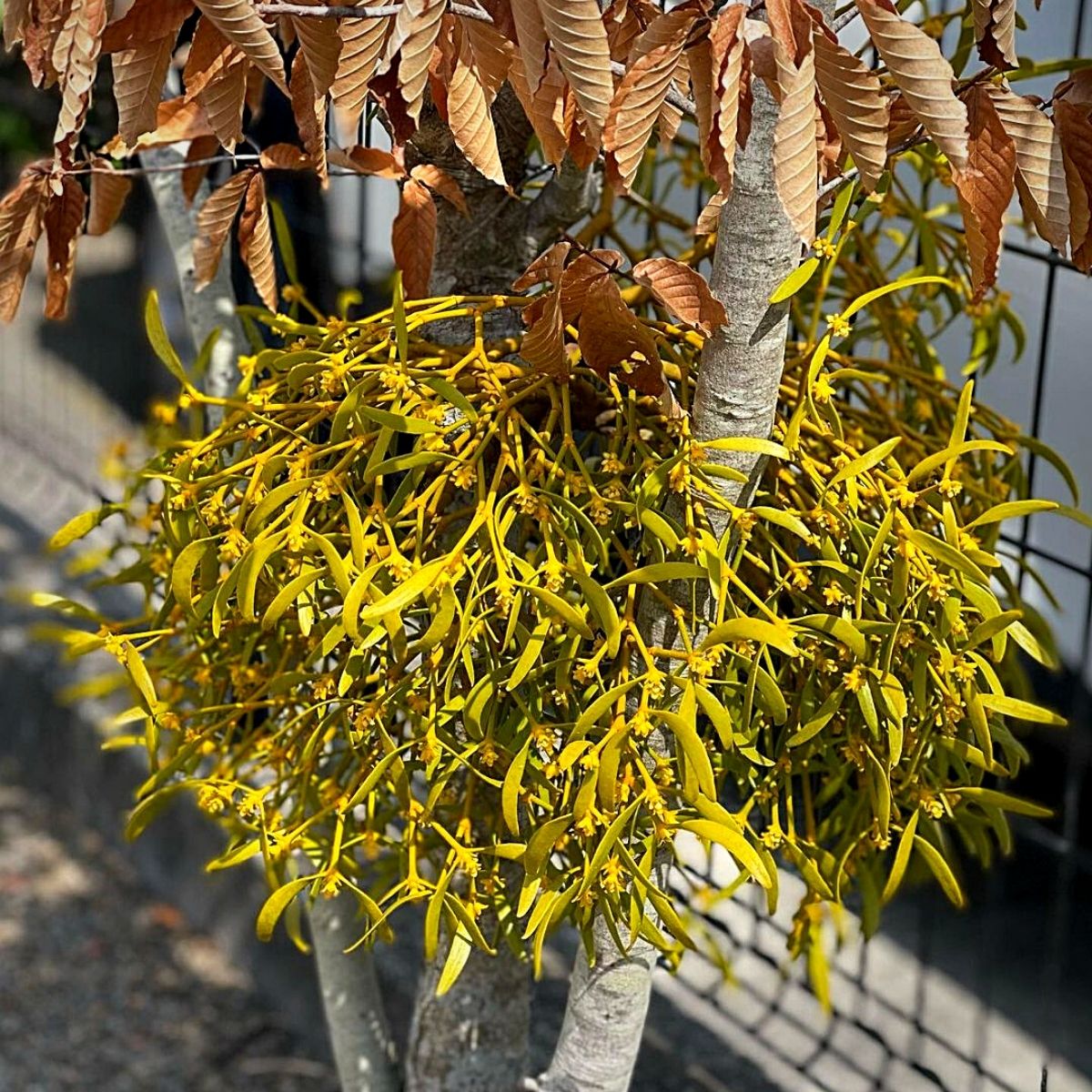
Photo by @bloomikumi
Aside from its Christmas and decoration purposes, mistletoe has been used for its medicinal properties elsewhere in various cultures throughout history. In traditional European herbal medicine, mistletoe was believed to have healing properties and was used to treat ailments such as epilepsy, hypertension, and arthritis.
That said, this is definitely a versatile plant that carries with it a rich history. A plant that you, hopefully, wouldn't mind hanging in your doorway this Christmas season!
Feature image by Enstropia on Wikimedia Commons, header image by Hans

